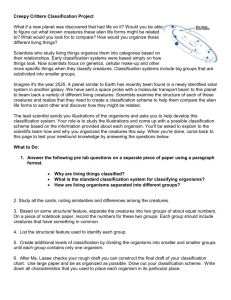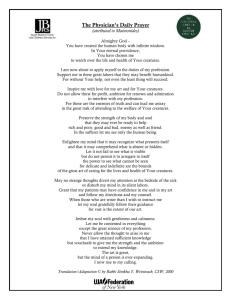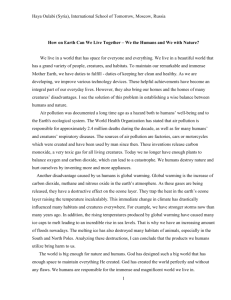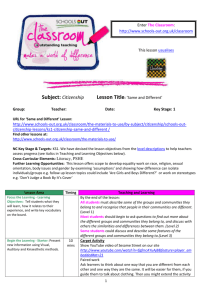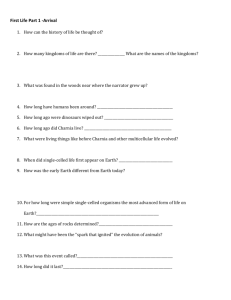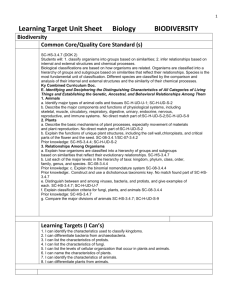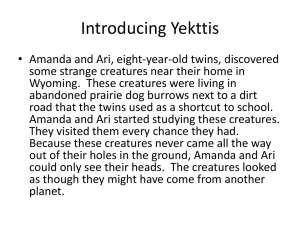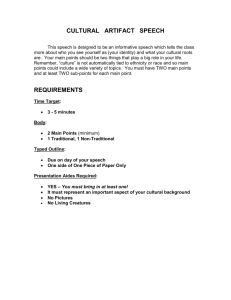Caminalcule creature which can then be sorted into different groups
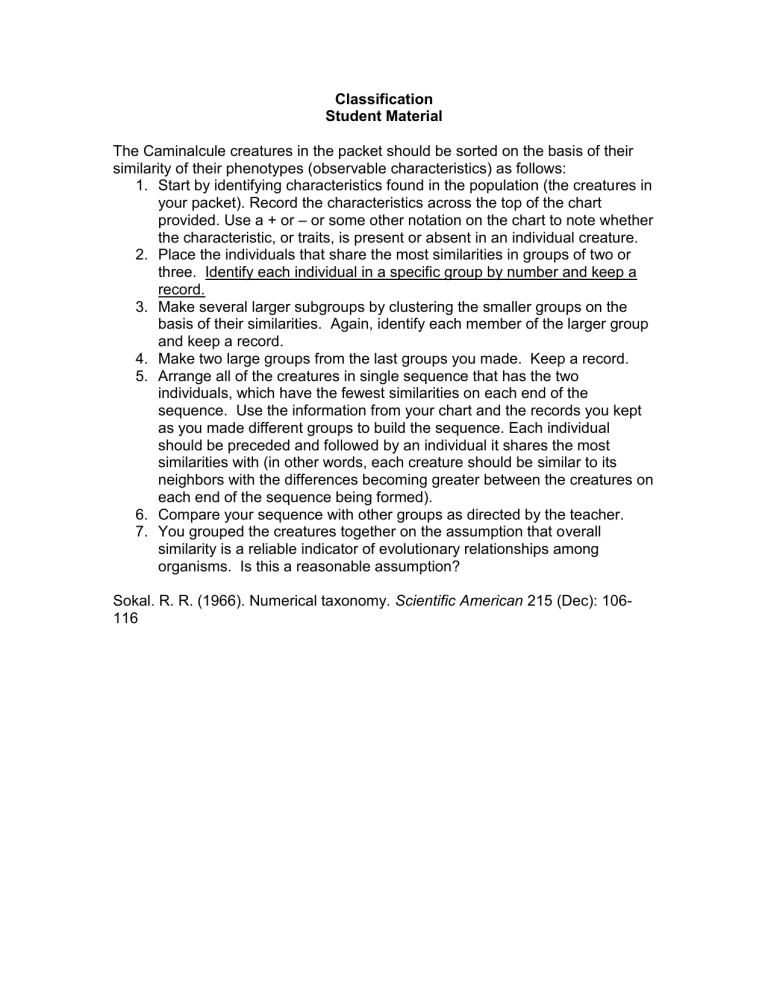
Classification
Student Material
The Caminalcule creatures in the packet should be sorted on the basis of their similarity of their phenotypes (observable characteristics) as follows:
1. Start by identifying characteristics found in the population (the creatures in your packet). Record the characteristics across the top of the chart provided. Use a + or
– or some other notation on the chart to note whether the characteristic, or traits, is present or absent in an individual creature.
2. Place the individuals that share the most similarities in groups of two or three. Identify each individual in a specific group by number and keep a record.
3. Make several larger subgroups by clustering the smaller groups on the basis of their similarities. Again, identify each member of the larger group and keep a record.
4. Make two large groups from the last groups you made. Keep a record.
5. Arrange all of the creatures in single sequence that has the two individuals, which have the fewest similarities on each end of the sequence. Use the information from your chart and the records you kept as you made different groups to build the sequence. Each individual should be preceded and followed by an individual it shares the most similarities with (in other words, each creature should be similar to its neighbors with the differences becoming greater between the creatures on each end of the sequence being formed).
6. Compare your sequence with other groups as directed by the teacher.
7. You grouped the creatures together on the assumption that overall similarity is a reliable indicator of evolutionary relationships among organisms. Is this a reasonable assumption?
Sokal. R. R. (1966). Numerical taxonomy. Scientific American 215 (Dec): 106-
116
1
1
4
1
6
7
8
1
2
2
1
1
2
3
4
5
6
7
8
9
0
1
2
2
2
2
2
7
2
2
Classification
Teacher Material
Overview
This activity introduces the problem of classification and relationships using an imaginary animal. The National Science Education Standards emphasize:
Biological classifications are based on how organisms are related.
Organisms are classified into a hierarchy of groups and subgroups based on similarities, which reflect their evolutionary relationships.
Species is the most fundamental unit of classification. ( National Science
Education Standards )
In this activity, the imaginary creatures are classified on the basis of observable traits, or phenotypes.
TEKS-Biology
7 The students knows the theory of biological evolution
C3E evaluate models according to their adequacy in representing biological objects or events
7B illustrates the results of natural selection in speciation, diversity,
8 phylogeny, adaptation, behavior, and extinction
The student knows application of taxonomy & can identify its limitations
8B analyze relationships among organisms & develop a model of a hierarchical classification system based on similarities & differences using taxonomic nomenclature;
Materials
Packets containing each of the Caminalcule creatures for each group of students (template is provided)
Phenogram produced by computers used in the 1966 research, which is cited below,
Engagement
1. Brainstorm a list of different restaurants and eating-places.
2. Next classify them into subgroups on the basis of some criteria.
3. Critique the effectiveness of classifying or grouping restaurants on the basis of these criteria.
Exploration and Concept formation
The Caminalcule creatures in the packet should be sorted on the basis of their similarity of their phenotypes (observable characteristics) as follows:
1. Start by identifying characteristics found in the population (the creatures in your packet). Record the characteristics across the top of the chart provided. Use a + or
– or some other notation on the chart to note whether the characteristic, or traits, is present or absent in an individual creature.
2. Place the individuals that share the most similarities in groups of two or three. Identify each individual in a specific group by number and keep a record.
3. Make several larger subgroups by clustering the smaller groups on the basis of their similarities. Again, identify each member of the larger group and keep a record.
4. Make two large groups from the last groups you made. Keep a record.
5. Arrange all of the creatures in single sequence that has the two individuals, which have the fewest similarities on each end of the sequence. Use the information from your chart and the records you kept as you made different groups to build the sequence. Each individual should be preceded and followed by an individual it shares the most similarities with (in other words, each creature should be similar to its neighbors with the differences becoming greater between the creatures on each end of the sequence being formed).
6. Compare your sequence with other groups as directed by the teacher.
7. You grouped the creatures together on the assumption that overall similarity is a reliable indicator of evolutionary relationships among organisms. Is this a reasonable assumption?
Reference
Sokal. R. R. (1966). Numerical taxonomy. Scientific American 215 (Dec): 106-
116
Developed by
Gerald Skoog
Texas Tech University
July, 2004
1
1
4
1
6
7
8
1
2
2
1
1
2
3
4
5
6
7
8
9
0
1
2
2
2
2
2
7
2
2
